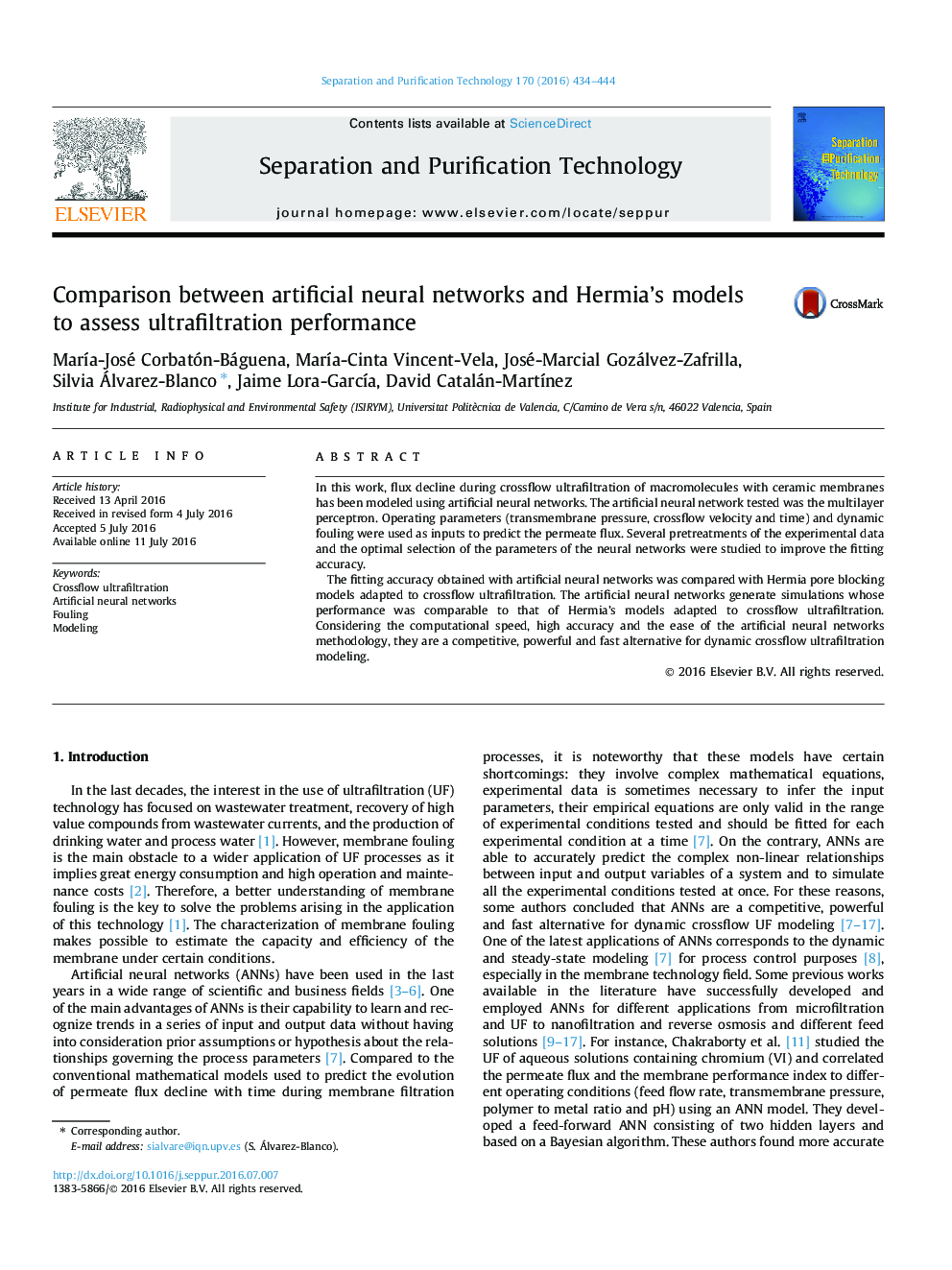| Article ID | Journal | Published Year | Pages | File Type |
|---|---|---|---|---|
| 639843 | Separation and Purification Technology | 2016 | 11 Pages |
•Feed-forward artificial neural network was employed to model crossflow UF.•The pretreatment and internal architecture of the ANNs were studied.•The ANNs achieved very accurate fitting results to experimental data.•ANNs achieve fittings that were comparable to Hermia’s models.
In this work, flux decline during crossflow ultrafiltration of macromolecules with ceramic membranes has been modeled using artificial neural networks. The artificial neural network tested was the multilayer perceptron. Operating parameters (transmembrane pressure, crossflow velocity and time) and dynamic fouling were used as inputs to predict the permeate flux. Several pretreatments of the experimental data and the optimal selection of the parameters of the neural networks were studied to improve the fitting accuracy.The fitting accuracy obtained with artificial neural networks was compared with Hermia pore blocking models adapted to crossflow ultrafiltration. The artificial neural networks generate simulations whose performance was comparable to that of Hermia’s models adapted to crossflow ultrafiltration. Considering the computational speed, high accuracy and the ease of the artificial neural networks methodology, they are a competitive, powerful and fast alternative for dynamic crossflow ultrafiltration modeling.
